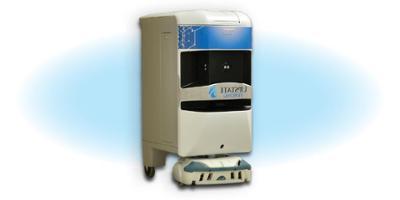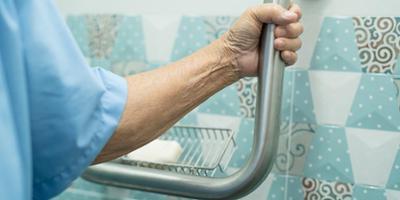A conversation with a movie-set medic
Being innovative and mobile are key elements of her job
Heather Drake Bianchi got her paramedic training at Upstate. At the start of the pandemic, she launched a business that put her skills to work. CineMedics CNY provided medical support on movie sets, which included COVID-19 testing and safety oversight.
Her company has grown beyond movie sets and now provides mobile medical services on site for large events, at the workplace and at home through her company Drakos Clinical Laboratories.
The Syracuse native recently answered some questions about her career.
What is it like, being a paramedic on a movie set?
“You hope that the medic is largely not doing anything, because medics are there primarily to respond to traumatic incidents and illnesses of an acute nature.
“What actually ends up happening is, when you work with the same film crew over and over again, you become their most trusted resource for a number of their medical questions and concerns. A lot of times, people in the movie industry work such long hours that they don’t have the free time to seek out what are much-needed resources for their personal care.
“So a lot of it is not just acute care, but recommendations for who they should go see, why it’s important that they see their primary care physician, helping them to navigate when it’s time to go to the hospital versus when they could go to an urgent care or when they should go see their primary care doctor.
“And then, to a surprising degree, it’s helping them navigate who’s accepting new patients, when they should go and encouraging them to actually be seen, to get their yearly blood work drawn, because otherwise it just doesn’t happen.
“They’re some of the most under-cared-for population that I’ve come across. That was very surprising to me.”
Does CineMedics CNY work beyond Central New York?
“We’ve been all over the United States and outside of the United States.
“We’re starting a project in London this week. I have another team member right now in Sierra Leone.
“We just wrapped a large project for HBO in Los Angeles, New Orleans and Florida.
“Boston was another big project. We were the primary medical resource and PCR (a test used to check for COVID infection) testing laboratory for a film called “Don’t Look Up.” It was a large-scale Netflix production.”
What sort of medical equipment do you carry?
“Everything is in a backpack, rather than working out of an ambulance. Everything is collapsible. Everything is portable.
“The most essential things we carry are medications or treatments for injuries and illnesses, where if you don’t solve it within the next five or 15 minutes, you have a real problem. So EpiPens to use for severe allergic reactions, for example. There’s been times that we have supported a film production that’s 40 minutes away from cellphone service, and that’s just cellphone service. That’s not even 40 minutes from help. And so you really need to have an EpiPen and then subsequent Benadryl to treat allergic reactions.
“And then, equipment to be able to treat gross bleeding and trauma. I was working on a sailing ship in the Mediterranean when there was a wave that came up and blew one of the individuals back into the mast. He actually fractured two vertebrae. Now, he was fine; he didn’t have any long-term problems. Managing that acutely was of the utmost importance until we could even get to the point of, not just getting to a hospital, but getting to land. That was a four-hour trip. So you have to think about things a little bit differently than if you were working in a city because when you’re hours or even days away from help, it’s a completely different way of approaching medicine.”
How do you get to a hospital, if you are in a remote location?
“In addition to medical supplies, some of the most important equipment that we have is various types of communication, not just cellphone service but also via satellite. And we recently integrated technology where we could text and communicate via radio waves. There are always safety nets to our initial plan, because if there’s anything that we’ve learned from being a completely self-sufficient logistical laboratory, it’s that you have to have backup plans. That’s just how you operate.
“As an austere paramedic, you’re not just doing the medical, but you’re also overseeing for logistics — that’s transportation, communication, getting in touch with the hospital. And then, you can’t forget about treating the patient in and of itself, which is an entire job.
“An austere paramedic has to be able to multitask better than any field that I can think of.”
Why did you choose a medical career?
“When I started at Rochester Institute of Technology, I was originally a photojournalism major. I switched to medicine, started taking science classes and finished in biomedicine. Later I went on to get my master’s in human anatomy and physiology.
“I got a second master’s from Syracuse University in molecular DNA analysis, the same time I was in paramedic training at Upstate. I chose Upstate because Upstate had a longer and more in-depth, more comprehensive program.
“Choosing to go into medicine comes from wanting to connect with people as much as possible and wanting to help them as much as possible and being advocates for them.”
This article appears in the spring 2023 issue of Upstate Health magazine.
Hear Drake Bianchi discuss her work on movie sets in an interview with Upstate's "The Informed Patient" podcast. Click here.





